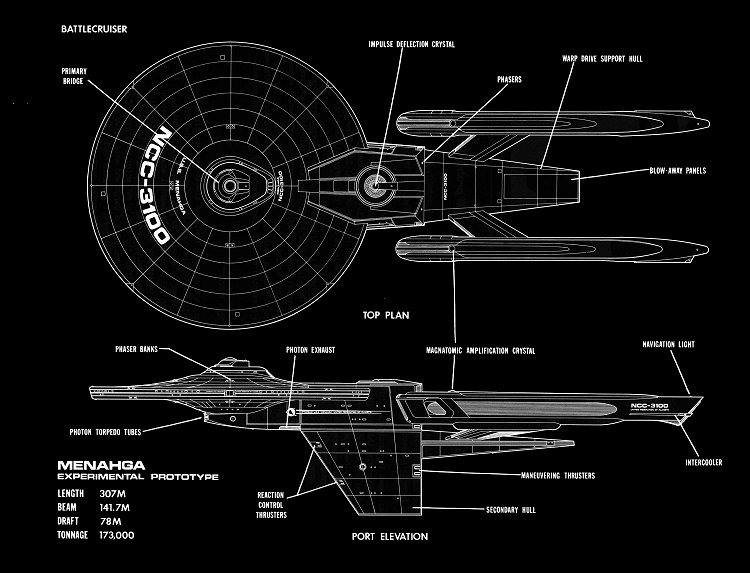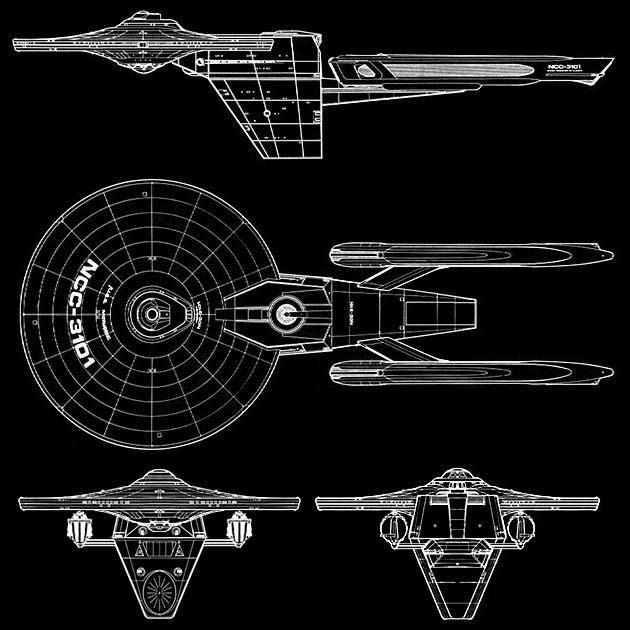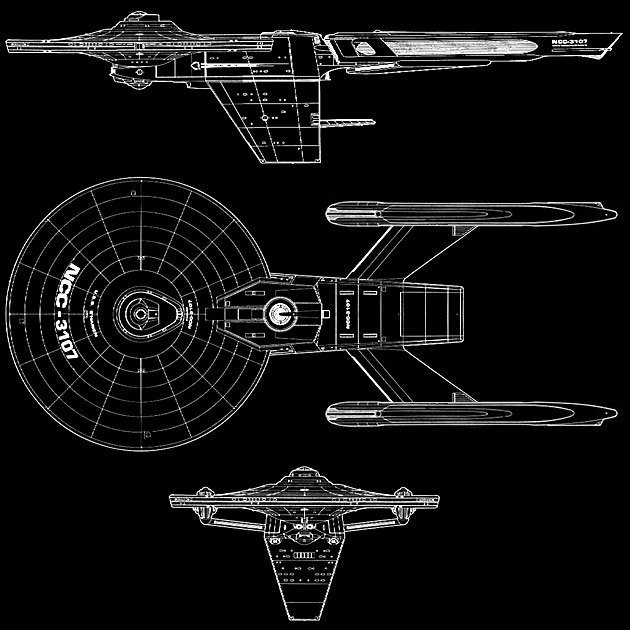

 Menahga class command and support ship
Menahga class command and support ship| NAME | REGISTRY | NOTES |
| Menahga | 3100 | Prototype vessel of the class. |
| Arsuf | 3101 | |
| Koryak | 3102 | |
| Mitannic | 3103 | First variant attempting to resolve issues. |
| Hastings | 3104 | |
| Marathon | 3105 | |
| Pashto | 3106 | |
| S'Harien | 3107 | Second variation - solved inherent design flaws. |
| Austerlitz | 3108 | |
| Zetar | 3109 | |
| Avendesta | 3110 | Name transferred from NCC 3107 |
| Absalon | 3111 | Named in tribute to the Danish design that made this starship make sense. |
 USS Menahga, NX 3100, was devised in the 2270s as a support ship design, incorporating aspects of a destroyer and multipurpose logistical assault ship. She would be a derivative of the Detroyat class. The prototype was launched in 2279 and was found to have flaws in several respects. Starfleet's Advanced Starship Design Bureau immediately started a program to resolve the outstanding issues. By the time the fourth vessel, U.S.S. Mitannic, was launched in 2284 a number of changes had been made to the design. These rectifying actions were still not a solution and a new design Practical experience with the Marathon in the Tabula Rasa campaign would provide the solutions that the drawing board failed to provide: U.S.S. S'Harien NCC 3107 incorporated these further changes and was authorised in 2291.
USS Menahga, NX 3100, was devised in the 2270s as a support ship design, incorporating aspects of a destroyer and multipurpose logistical assault ship. She would be a derivative of the Detroyat class. The prototype was launched in 2279 and was found to have flaws in several respects. Starfleet's Advanced Starship Design Bureau immediately started a program to resolve the outstanding issues. By the time the fourth vessel, U.S.S. Mitannic, was launched in 2284 a number of changes had been made to the design. These rectifying actions were still not a solution and a new design Practical experience with the Marathon in the Tabula Rasa campaign would provide the solutions that the drawing board failed to provide: U.S.S. S'Harien NCC 3107 incorporated these further changes and was authorised in 2291. Despite the hammering that the original Menahga design had in the Saess'Tan report of 2283, the Marathon had opened the door to the design for Starfleet Tactical and Fleet Admirals were pressing for full production. This decision was controversial, given the Saess'Tan report and subsequent Andernach class production, however the success of the spearhead use of the Marathon showed this was a good rapid response vessel for a crisis. Just what Starfleet needed. By using the Saess'Tan report as a template of all of the faults, including the warp support hull redesign.
Despite the hammering that the original Menahga design had in the Saess'Tan report of 2283, the Marathon had opened the door to the design for Starfleet Tactical and Fleet Admirals were pressing for full production. This decision was controversial, given the Saess'Tan report and subsequent Andernach class production, however the success of the spearhead use of the Marathon showed this was a good rapid response vessel for a crisis. Just what Starfleet needed. By using the Saess'Tan report as a template of all of the faults, including the warp support hull redesign.




